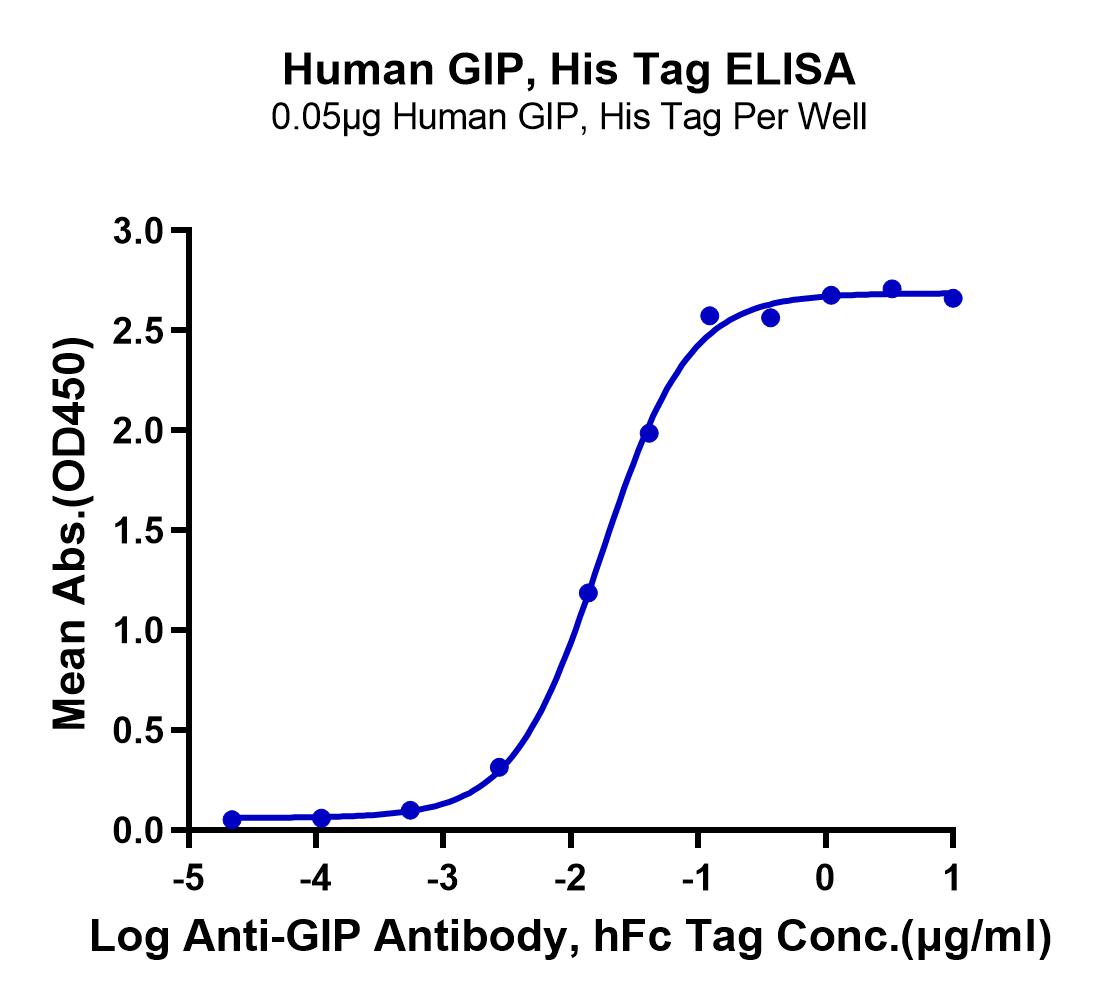|
| Human GIP Protein (LTP10390) |
|
| LTP10390 |
|
| 100ug |
|
|
$406 In stock |
| The potential application of glucose-dependent insulinotropic polypeptide (gastric inhibitory polypeptide, GIP) in the management of obesity and type 2 diabetes has been controversial. Initial interest in the therapeutic use of GIP was dampened by evidence that its insulinotropic activity was reduced in type 2 diabetes and by reports that it increased glucagon secretion and adipose deposition in non-diabetic individuals. |
| Recombinant Human GIP Protein is expressed from Expi293 with His tag at the C-terminal. It contains Glu22-Gln93. |
|
| GIP |
|
| Human |
|
| P09681 |
|
| Glu22-Gln93 |
|
| The protein has a predicted MW of 9.2 kDa. Due to glycosylation, the protein migrates to 15-25 kDa based on the Tris-Bis PAGE result. |
|
| Immobilized Human GIP, His Tag at 0.5ug/ml (100ul/Well) on the plate. Dose response curve for Anti-GIP Antibody, hFc Tag with the EC50 of 17.3ng/ml determined by ELISA. See testing image for detail. |
|
| C-His |
|
| Expi293 |
|
| > 95% as determined by Tris-Bis PAGE; > 95% as determined by HPLC |
|
| Less than 1EU per ug by the LAL method. |
|
| Lyophilized from 0.22 um filtered solution in PBS (pH 7.4). Normally 5% trehalose is added as a protectant before lyophilization. |
|
| Reconstituted protein stable at -80 C for 12 months, 4 C for 1 week. Use a manual defrost freezer and avoid repeated freeze-thaw cycles. |
|
| Shipped at ambient temperature. |
|
| Centrifuge tubes before opening. Reconstituting to a concentration of more than 100 ug/ml is recommended. Dissolve the lyophilized protein in distilled water. |
|
|  |